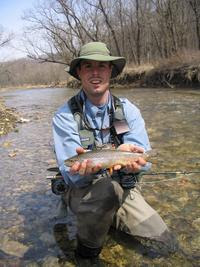
Children who attend school near large-scale livestock farms known as concentrated animal feeding operations (CAFOs) may be at a higher risk for asthma, according to a new study by University of Iowa researchers.
The study, led by Joel Kline, M.D., professor of internal medicine in the UI Roy J. and Lucille A. Carver College of Medicine, appears in the June issue of Chest, the peer-reviewed journal of the American College of Chest Physicians http://www.chestjournal.org/.
“Previous research has shown increased rates of asthma among children living in rural areas of Iowa and the United States,” said Kline, who also is deputy director of the Environmental Health Sciences Research Center (EHSRC) in the UI College of Public Health, which helped fund the study. “Given that CAFOs release inflammatory substances that can affect the health of workers at these facilities and the air quality of nearby communities, we were interested in whether there was a connection between CAFOs and increased rates of asthma among kids in rural areas.”
Researchers surveyed the parents of kindergarten through fifth-grade students attending two Iowa elementary schools to compare the prevalence of asthma among students. The “study” school was located a half-mile from a CAFO in northeast Iowa; the “control” school was in east-central Iowa, more than 10 miles away from any CAFO (generally classified as a livestock facility that houses more than 1,000 animal units). Sixty-one participants responded from the study school, and 248 participants responded from the control school.
Study results indicated a significant difference in the prevalence of physician-diagnosed asthma between the two schools: 12 children (19.7 percent) from the study school located near a CAFO and 18 children (7.3 percent) from the control school. The overall rate of physician-diagnosed asthma reported for Iowa is around 6.7 percent, the study authors noted.
Read more..

 "This is America, where a white Catholic male Republican judge was murdered on his way to greet a Democratic Jewish woman member of Congress, who was his friend. Her life was saved initially by a 20-year old Mexican-American gay college student, and eventually by a Korean-American combat surgeon, all eulogized by our African American President."
"This is America, where a white Catholic male Republican judge was murdered on his way to greet a Democratic Jewish woman member of Congress, who was his friend. Her life was saved initially by a 20-year old Mexican-American gay college student, and eventually by a Korean-American combat surgeon, all eulogized by our African American President."






